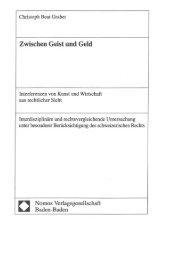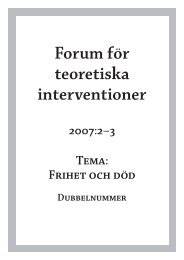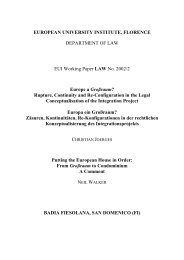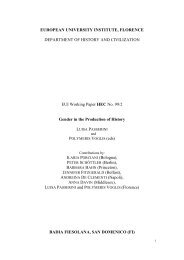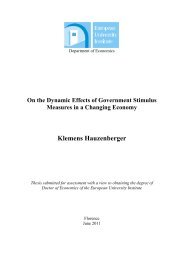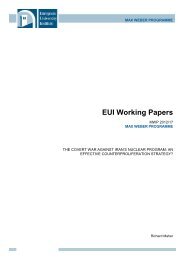Sinziana-Elena Poiana Ioana Lupea Irina-Madalina Doroftei Alina ...
Sinziana-Elena Poiana Ioana Lupea Irina-Madalina Doroftei Alina ...
Sinziana-Elena Poiana Ioana Lupea Irina-Madalina Doroftei Alina ...
You also want an ePaper? Increase the reach of your titles
YUMPU automatically turns print PDFs into web optimized ePapers that Google loves.
The “area of benefit” financial allocation argument did not work one way alone. The results of the<br />
Ethnic Relations Barometer (2002, p.26) showed that a large percentage of Romanians in Transylvania<br />
(67%) and outside (61%) considered that the rights minorities enjoyed at the time of the survey<br />
sufficed. Similar percentages were registered for Hungarians (64%) and Roma (61%) who thought that<br />
minorities in Romania enjoy too few rights. One thing was certain: granting further rights to the<br />
Hungarian minority without further decentralization would have not come in too cheap for the central<br />
government. With decentralization (or de-concentration, for some services) the financial costs of<br />
minority rights remained unobvious. Some were completely externalized, as was the case of manuals<br />
in maternal language for primary education. The failure to provide manuals in Hungarian, or German<br />
for all school subjects (except maybe for mathematics and literature) is entirely placed on the market,<br />
and not on the government for not being able to intervene and correct this natural effect of competition<br />
among manual editors. The situation persists.<br />
24,4<br />
19.9<br />
75.1<br />
9.3<br />
6.4<br />
52.2<br />
Poverty rate Extreme<br />
poverty rate<br />
Hungarian<br />
Romanian<br />
Roma<br />
Chart. Poverty and extreme poverty rates distribution across<br />
Romanian, Hungarian and Roma ethnic groups in Romania, 2002<br />
Source: Ethnic Diversity Research Center, Ethnic Relations<br />
Barometer 2000 – 2002<br />
27<br />
Third, there are major discrepancies in<br />
terms of access to resources between<br />
the Roma and the other ethnic groups<br />
in Romania. For the Romanians,<br />
Hungarians and Roma the 2002<br />
Barometer of Ethnic Relations (MMT,<br />
2003) identified the distribution of<br />
intra-ethnic rates of poverty and<br />
extreme poverty (see Chart 2).<br />
The question is what proportion of this<br />
discrepancy can be structurally<br />
explained and how much can be placed<br />
on discriminatory policies or attitudes.<br />
In a previous section we briefly<br />
touched upon the vicious cycle that the<br />
Roma are caught in: low access to<br />
education has made labor market<br />
integration difficult for Roma ethnics,<br />
which accounts for high differences<br />
between employment rates within the<br />
Roma and non-Roma populations. Not being able to access the labor market, means finding other<br />
sources of income. For a large percentage of the Roma (55,9%) this means some form of social<br />
support, while for others is staying on the black market. The problem is as real as it gets, and even<br />
though enrollment rates for Roma children were slightly increasing since 2000, the enrollment rate for<br />
Roma in primary school still remained significantly lower (by 25%) than that of non-Roma children<br />
(UNICEF, 2006).<br />
Discriminatory practices, especially in relation to the Roma, aggravate the situation. A survey run in<br />
2005 (CURS, 2005, p.9) showed that the Roma population perceives itself as being the most<br />
discriminated as compared to the main ethnic groups (Romanian and Hungarian), as much as in<br />
comparison to other marginalized groups – HIV positive people, gay people or the elderly. Out of the<br />
situations when discrimination can be more pervasive the one at hiring stands out, with 68% of Roma<br />
considering themselves discriminated when they tried to get a job. Once hired, 63% of them feel<br />
discriminated at the workplace. The other two situations that come close are in school (60% of Roma<br />
children considering themselves discriminated) and in public places (50%). On the other hand, in the<br />
Eurobarometer on Perception and Experience of Discrimination (2008), only 40% of the Romanian<br />
population declared that they believe that discrimination on ethnic origin is fairly or very widespread,<br />
as compared to the 62% EU average. The same survey showed that Romanians are generally favorable<br />
towards ensuring equal opportunities at employment through affirmative action measures targeting



